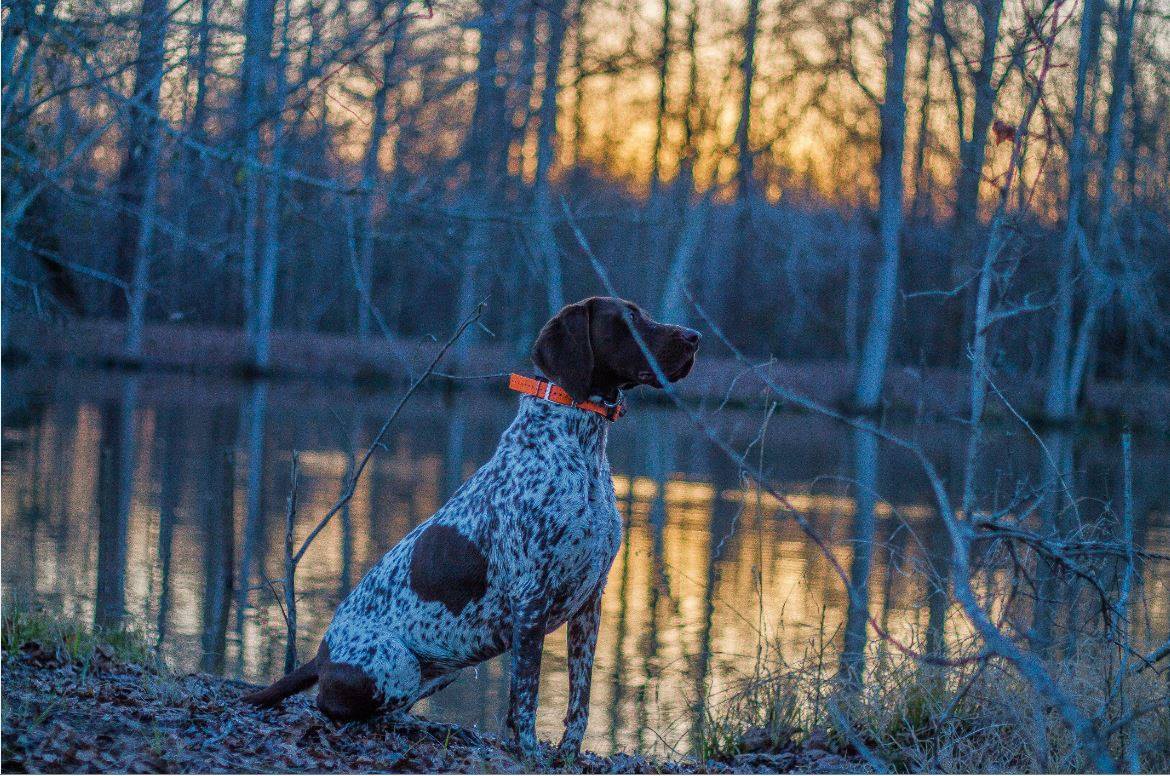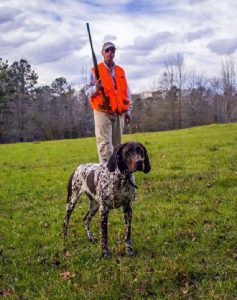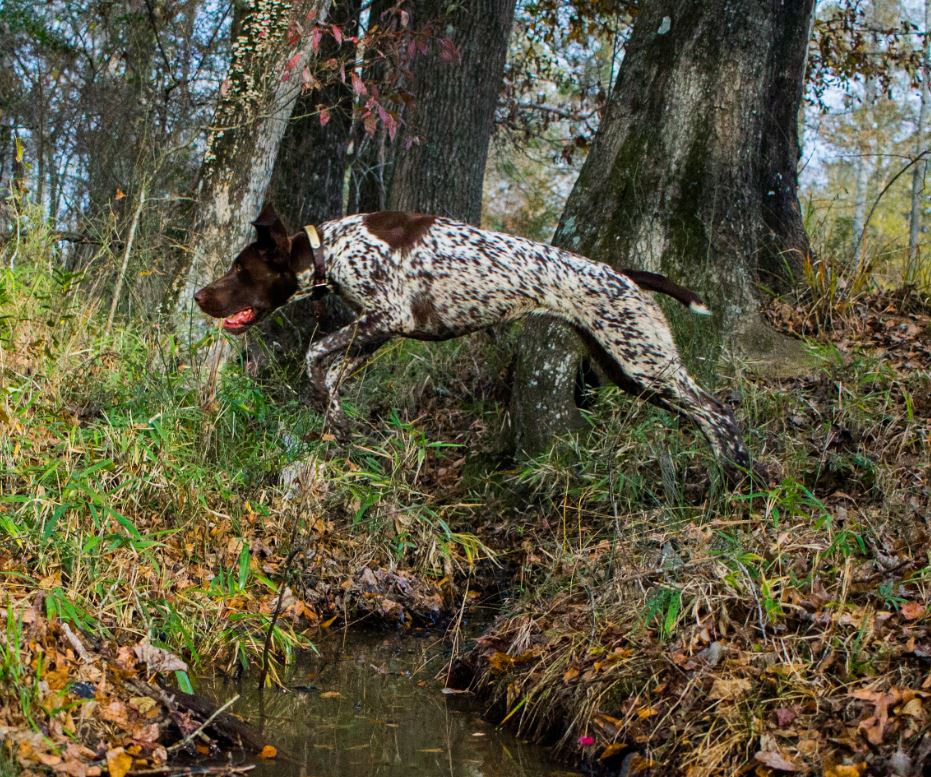
 “Zula the Dog is the finest bird dog I’ve ever owned,” says John White.
“Zula the Dog is the finest bird dog I’ve ever owned,” says John White.
“A few years ago, I trained a beautiful German Shorthaired Pointer named Sassy for a friend of mine, and I just fell in love with the breed.
“As a kid, my first dog was a Weimaraner, and the GSP reminds me of a cross between that breed and the English Pointer. Of course, Sassy played a big role in winning me over. She was one of the easiest dogs to train I ever saw.”
Besides being a TV personality, Zula is professional hunting dog. During quail season, she can be found at Cedar Rock Hunting Preserve in Shelbyville, Tennessee.
You can follow Zula the Dog on Instagram: @germanshorthairdog

“The German Shorthaired Pointer (GSP) is a medium to large sized breed of dog developed in the 19th century in Germany for hunting. A versatile hunting breed, being an all-purpose gun breed of dog suitable for both land and water, it is streamlined yet powerful with strong legs that make it able to move rapidly and turn quickly. It has moderately long floppy ears set high on the head. Its muzzle is long, broad, and strong, allowing it to retrieve even heavy game. The dog’s profile should be straight or strongly Roman nosed; any dished appearance to the profile is incorrect. The eyes are generally brown, with darker eyes being desirable; yellow or “bird of prey” eyes are a fault. The tail is commonly docked, although this is now prohibited in some countries. The correct location for docking for a GSP is after the caudal vertebrae start to curl, leaving enough tail to let the dog communicate through tail wagging and movement.[citation needed] The docked tail should not be too long or too short but should balance the appearance of the head and body. The GSP tail is carried at a jaunty angle, not curled under. When the GSP is in classic point stance, the tail should be held straight out from the body, forming a line with the pointing head and body. Like all German pointers, GSPs have webbed feet. They are known for going after water fowl in the water.” [Wikipedia.org]
